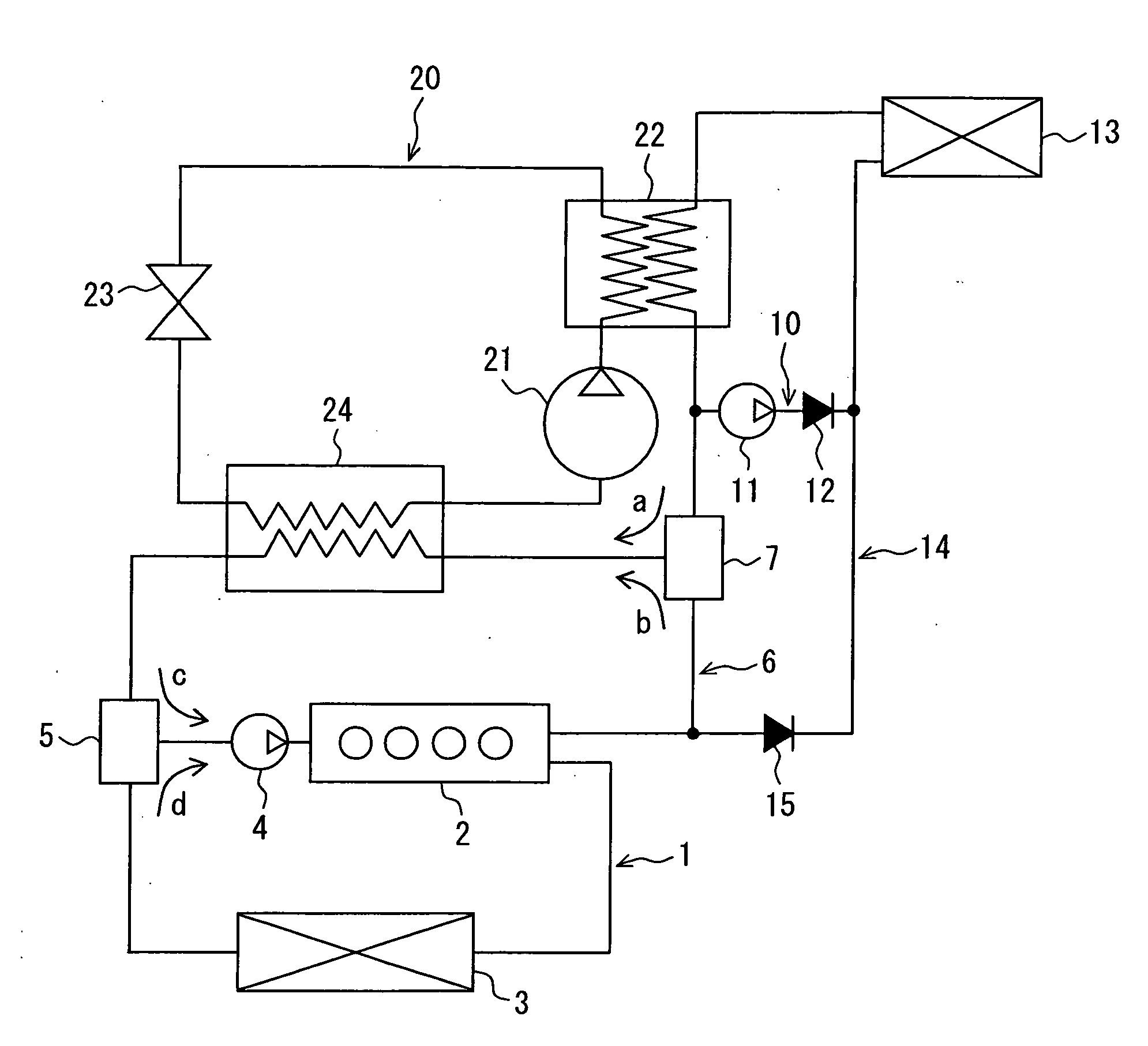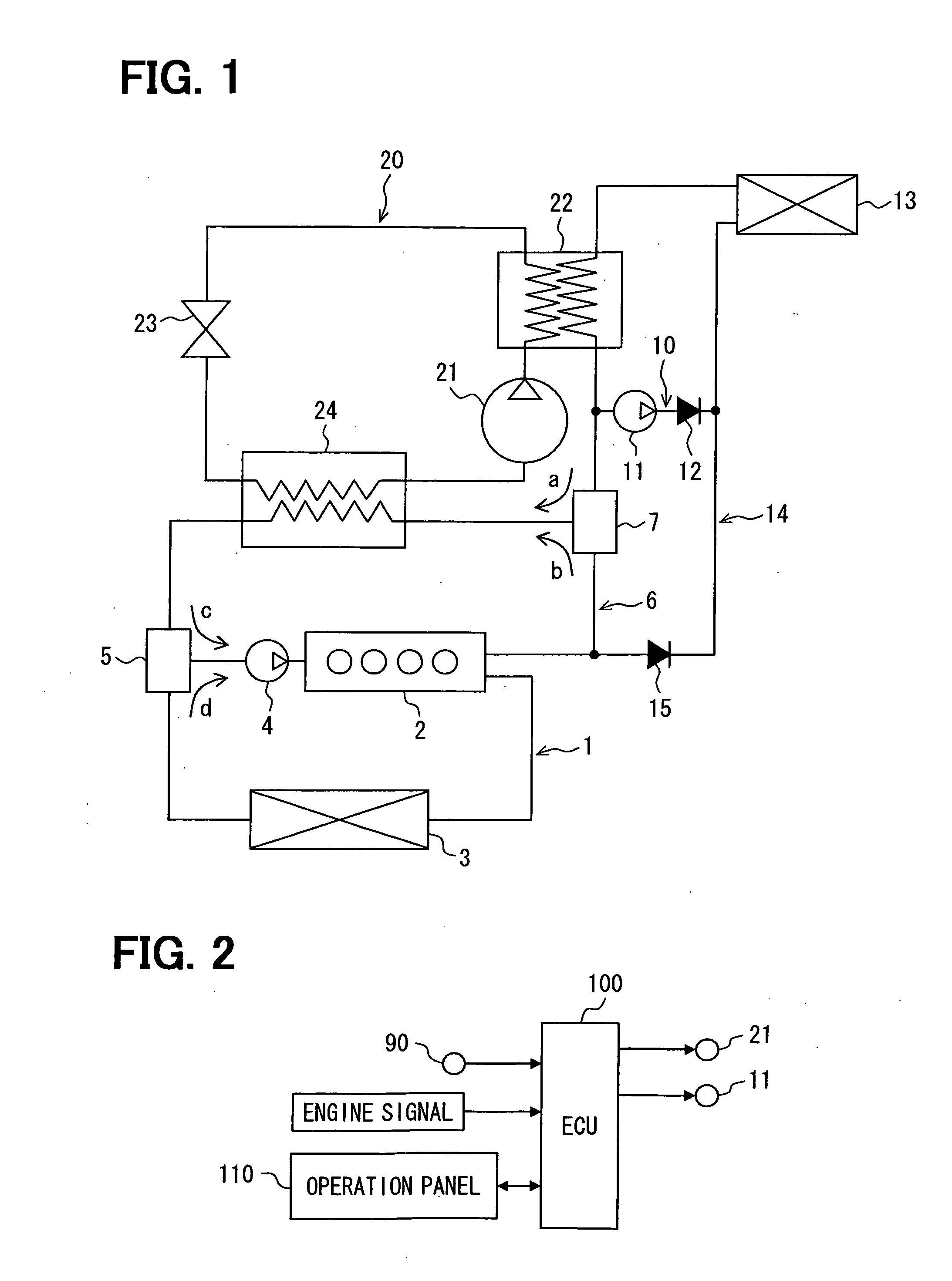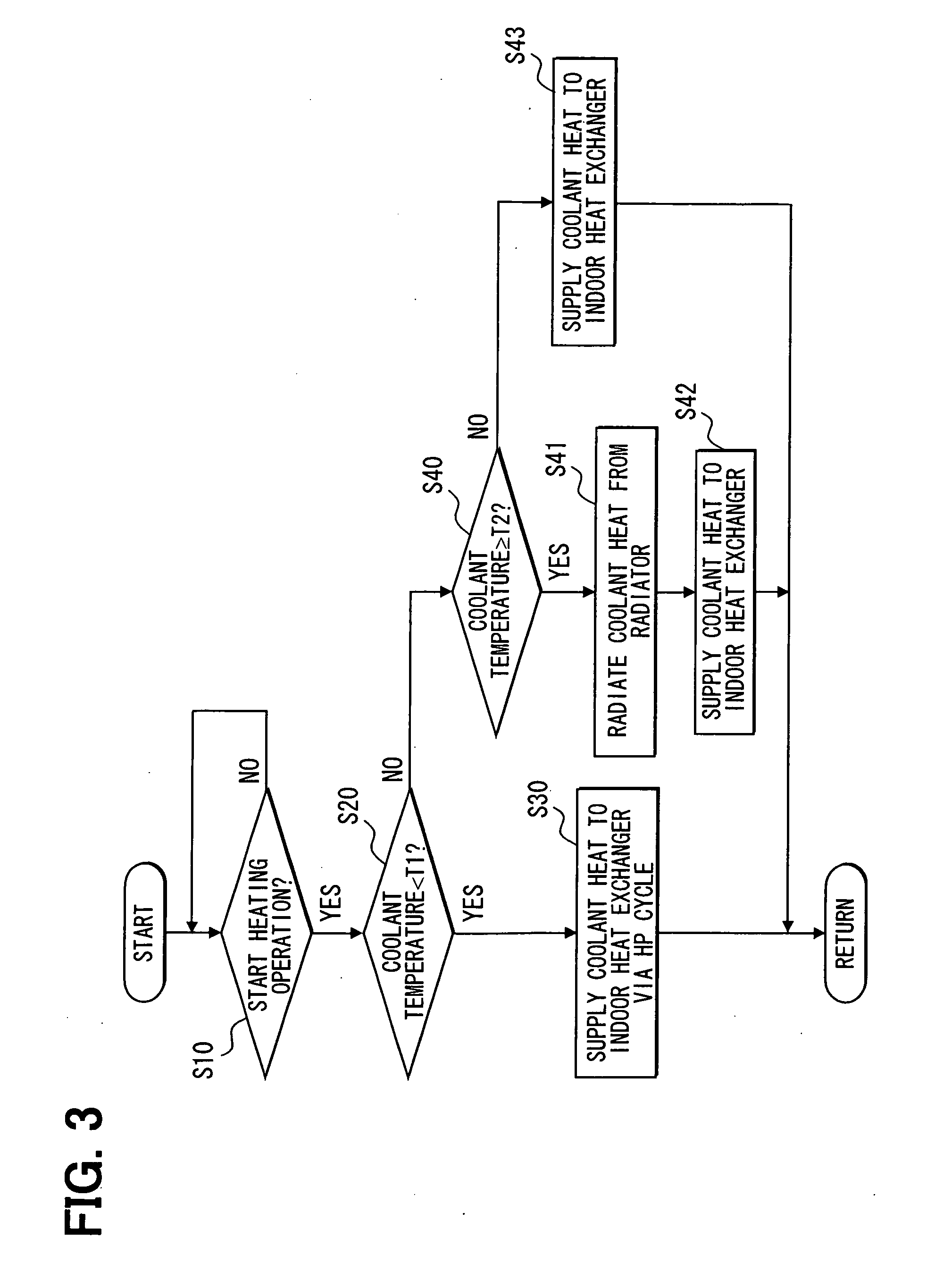Air conditioner for vehicle
a technology for air conditioners and vehicles, applied in the direction of indirect heat exchangers, refrigeration components, light and heating apparatuses, etc., can solve the problems of reducing the operation efficiency of the engine, inability to obtain sufficient heat, etc., to achieve the effect of reducing the energy loss due to the heat radiation in the engine, achieving sufficient heating capacity, and achieving the effect of heating capacity
- Summary
- Abstract
- Description
- Claims
- Application Information
AI Technical Summary
Benefits of technology
Problems solved by technology
Method used
Image
Examples
first embodiment
[0022]A vehicle air conditioner of a first embodiment of the present invention will be described with reference to FIGS. 1 to 3.
[0023]As shown in FIG. 1, the vehicle air conditioner is a circuit to which an engine 2 for driving a vehicle is connected, and includes a coolant circuit, in which a coolant for cooling the engine 2 circulates, and a vapor-compression type heat pump cycle 20 that conditions air in a vehicle compartment by controlling a state of a circulating refrigerant. Further, the vehicle air conditioner is a device that causes heat of at least one of the coolant and the refrigerant to be used for a heater in the vehicle compartment. The heat pump cycle 20 includes a compressor 21, a second water-refrigerant heat exchanger 22 as a high-pressure side heat exchanger, an expansion valve 23 and a first water-refrigerant heat exchanger 24 that exchanges heat between the coolant and the refrigerant, and configures a refrigerant circuit in which these components are circularly...
second embodiment
[0052]In a second embodiment, another example of the vehicle air conditioner of the first embodiment will be described with reference to FIG. 4. A component in FIG. 4, which is designated by the same reference numeral with the component in FIG. 1, is the same component with that of the first embodiment, and has the similar effect described In the first embodiment.
[0053]As shown in FIG. 4, a heat pump cycle 20A of a vehicle air conditioner of the present embodiment differs from the-heat pump cycle 20 of the first embodiment in that an outdoor heat exchanger 25 is arranged at a discharge side of the expansion valve 23 as the first decompression device. The outdoor heat exchanger 25 is a heat exchanger configured such that a refrigerant circulating in the heat pump cycle 20A flows through the inside thereof and outdoor air to be heat-exchanged with the refrigerant flows through the outside thereof. Further, a blower fan 26 for blowing the outdoor air is arranged adjacent to the outdoor...
third embodiment
[0061]In a third embodiment, another example of the vehicle air conditioner of the first embodiment will be described with reference to FIGS. 5 and 6. A component or a step in FIGS. 5 and 6, which is designated by the same reference numeral with the component or the step in FIGS. 1 and 3, is the same component or the step with that of the first embodiment, and has the similar effect described in the first embodiment.
[0062]As shown in FIG. 5, a heat pump cycle 20B of a vehicle air conditioner of the present embodiment differs from the heat pump cycle 20 of the first embodiment in the following points. The heat pump cycle 20B has the refrigerant passage that is branched into a first refrigerant passage and a second refrigerant passage 30 at a discharge side of the second water-refrigerant heat exchanger 22. In the first refrigerant passage, the expansion valve 23 and the first water-refrigerant heat exchanger 24 are arranged in this order in the downstream direction. In the second ref...
PUM
 Login to View More
Login to View More Abstract
Description
Claims
Application Information
 Login to View More
Login to View More - R&D
- Intellectual Property
- Life Sciences
- Materials
- Tech Scout
- Unparalleled Data Quality
- Higher Quality Content
- 60% Fewer Hallucinations
Browse by: Latest US Patents, China's latest patents, Technical Efficacy Thesaurus, Application Domain, Technology Topic, Popular Technical Reports.
© 2025 PatSnap. All rights reserved.Legal|Privacy policy|Modern Slavery Act Transparency Statement|Sitemap|About US| Contact US: help@patsnap.com



